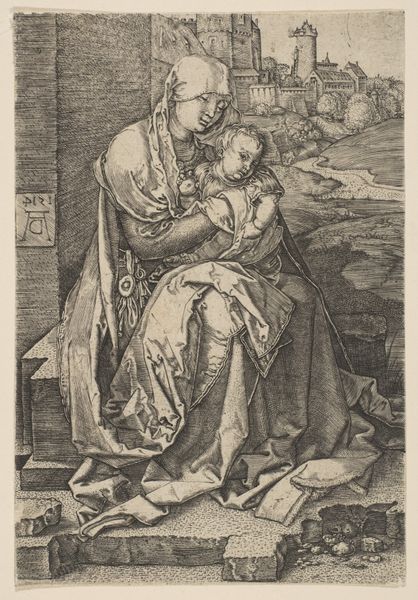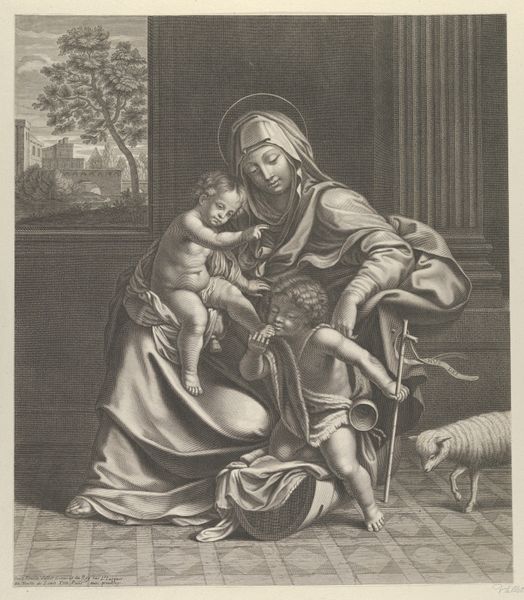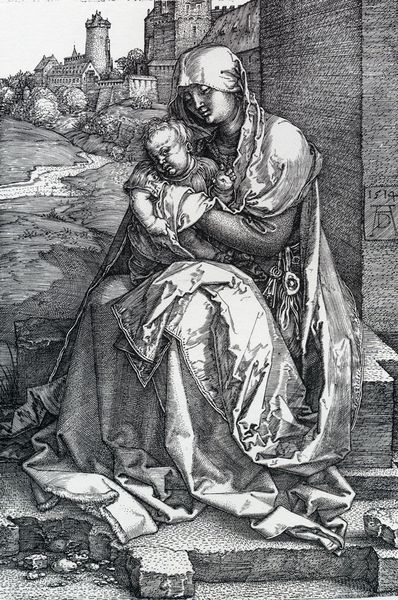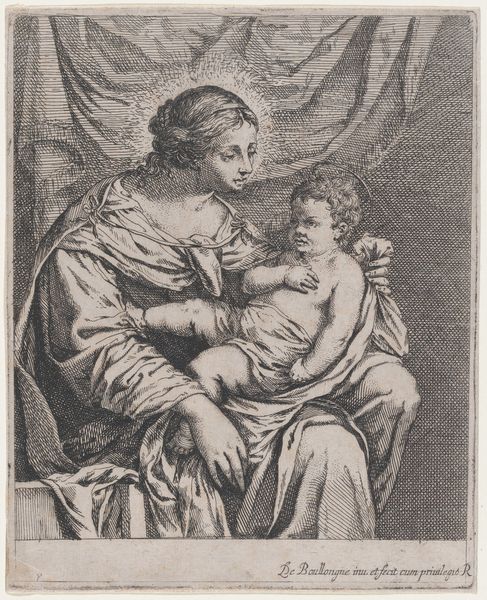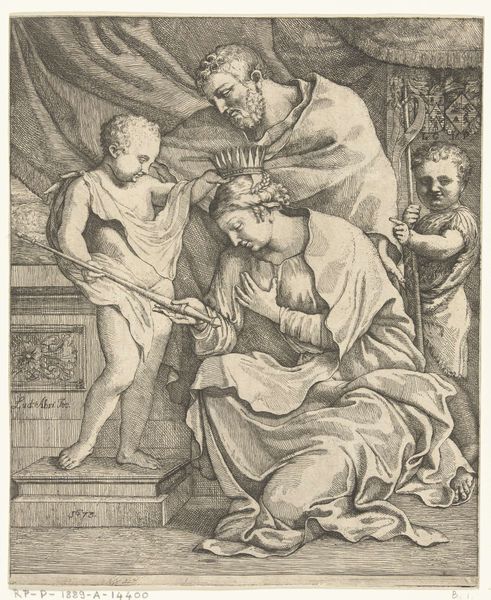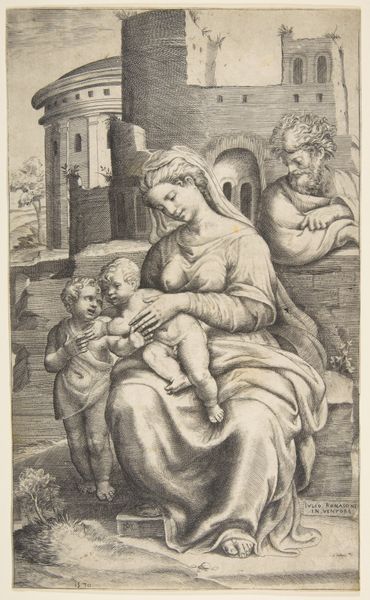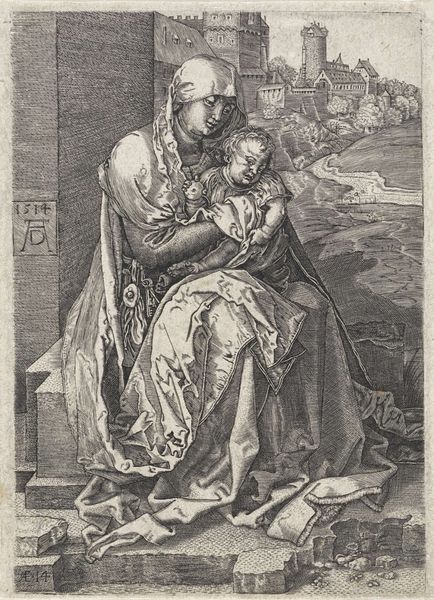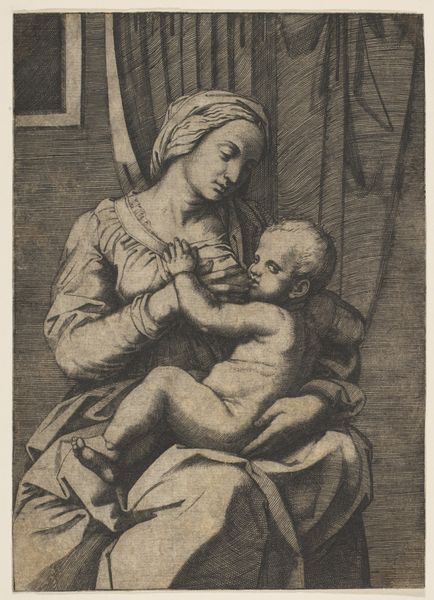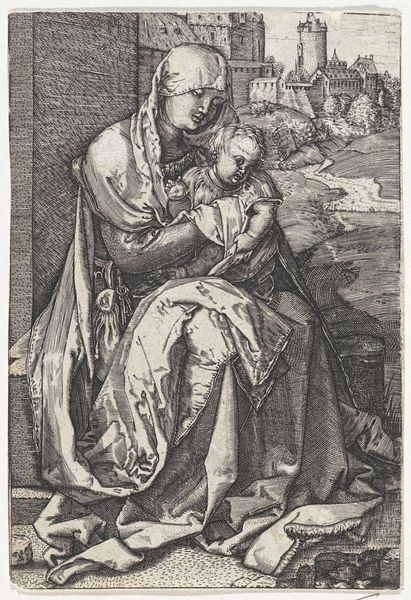
print, engraving
# print
#
figuration
#
history-painting
#
italian-renaissance
#
engraving
Dimensions: 5 3/4 x 3 15/16 in. (14.61 x 10 cm) (sheet)19 7/8 x 14 15/16 x 5/8 in. (50.48 x 37.94 x 1.59 cm) (outer frame)
Copyright: Public Domain
Albrecht Dürer created this engraving, Virgin and Child Seated by the Wall, in 1514, during a period of immense religious and social change in Europe. Dürer situates the Virgin Mary and her child in a humble, human context. She sits wearily, and the Christ child seems almost to slumber in her arms. This intimacy suggests the profound emotional bond between mother and child. But Dürer also weaves in symbols of wealth and status. The Madonna’s garments fall in voluminous folds, and her belt and the Christ child’s coral necklace draw the eye. The setting, dominated by the looming architecture of a grand fortress, provides a visual narrative about power, security, and the roles of religious figures within society. How does this depiction contrast with the traditional portrayals of the Virgin Mary during the Renaissance? What does it convey about the complex intersections of faith, motherhood, and social status during Dürer's time?
Comments
minneapolisinstituteofart almost 2 years ago
⋮
Albrecht Dürer was the premier artist of renaissance Germany and remains the greatest engraver of all time. This exquisite work comes from the period when the artist's handling of the burin—the engraver's tool—was at its apogee. With countless minute incisions into the copper printing plate, he created an image filled with seemingly microscopic detail that seems monumental at the same time. He gives us a convincing impression of the Virgin's silken robes contrasted with the stony foundations of the massive fortification. Similarly the solidity of the foreground objects is matched against the airiness of the verdant countryside. Yet another contrast is that between the quiet peace and contentment of the mother and the disquiet of the Christ child, who firmly displays his apple, an allegory of the earthly world and man's sin, while looking at us with a probing gaze. Indeed this image conveys a yearning for a return to the Garden in a time before man ate from the Tree of Knowledge—redemption made possible through faith and symbolized by Mary's location outside the walls of a recognizable Nuremberg.
Join the conversation
Join millions of artists and users on Artera today and experience the ultimate creative platform.

